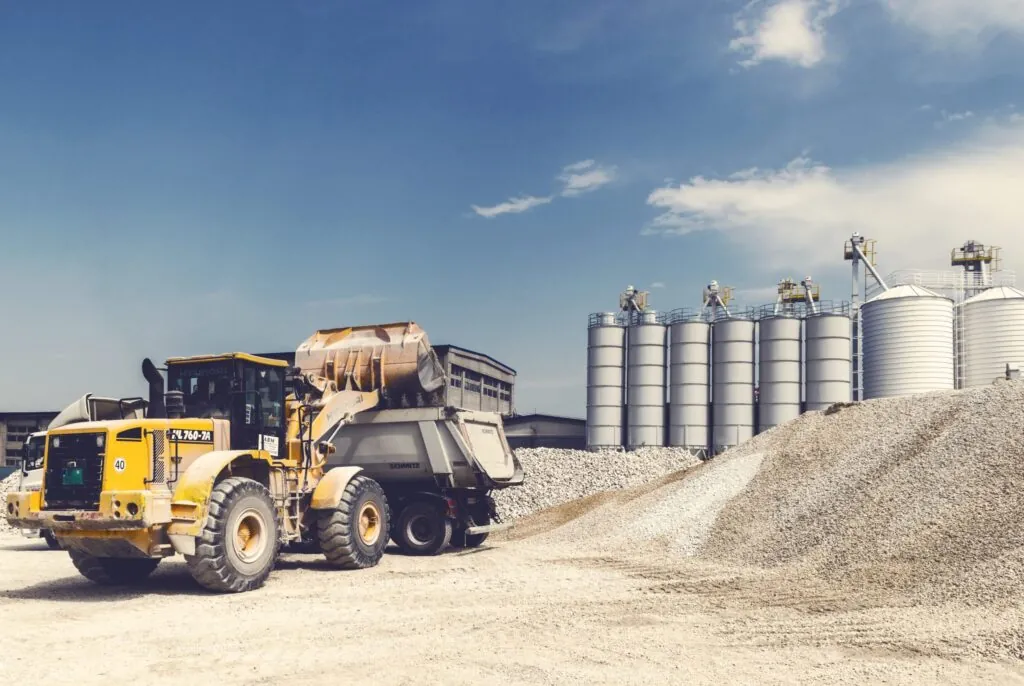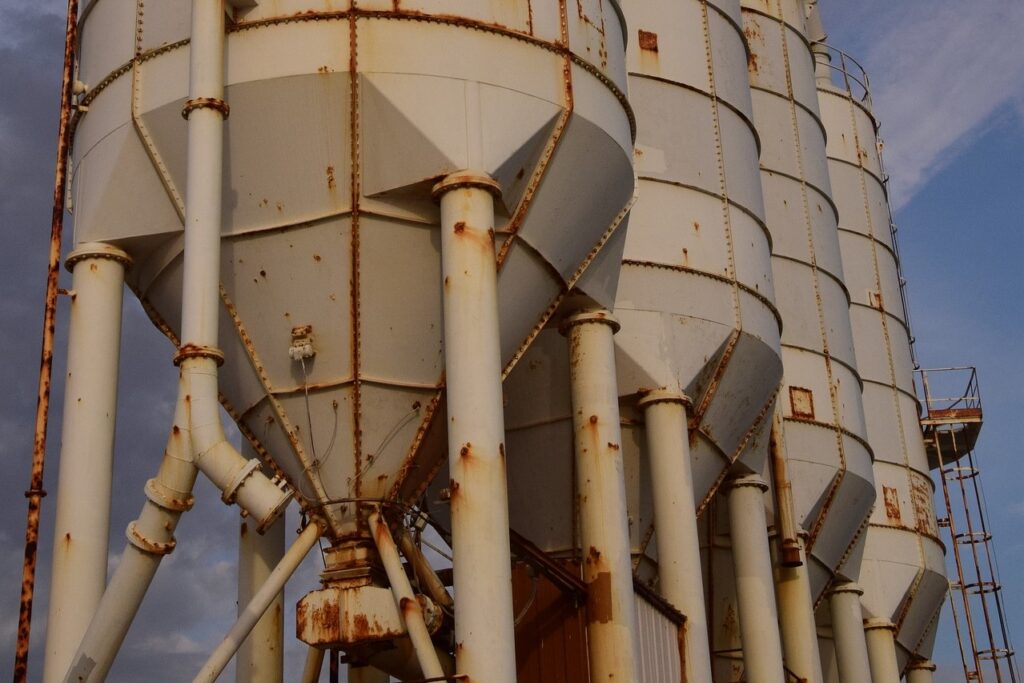
Why is My Cement Storage Silo Experiencing Clogs?
The cement storage silo plays an important role for a concrete or construction business. Not only does it protect concrete blends’ key ingredient and make it accessible for a crew, but it helps keep projects on track and clients happy.
Of course, those benefits hinge on a cement storage silo working as it should.
Clumps and clogs are common issues in the cement world, slowing material flow — or stopping it altogether — and often impacting project timelines. Understanding the causes behind such problems and how to ward them off, however, can help. Here, General Chipping’s silo cleaning pros walk you through what you should know about keeping your silos healthy, your cement flowing and your crew ready to roll on coming work.
How Does a Cement Silo Work?
Understanding the cement storage silo’s components and inner workings is important. Why? Because when you can visualize what’s happening inside, you can better grasp why — and how — to properly maintain it.
So, how does a cement silo work?
Although specifics vary based on who manufactured the silo and the specific model in use, in general it begins with cement being ushered in through an inlet pipe (also known as a fill pipe.) Material remains inside the cement storage silo until needed — kept dry and free-flowing with help from an airtight design and strategic aeration. When crews need to access the cement, a discharge mechanism releases a controlled amount into the mixing station, processing system or ready mix truck. At the same time, a filtration system captures dust, lowering the risk of product waste, as well as health and environmental hazards.
Let’s take a closer look at the key components that come into play with cement silo operations.
- Loading System: A fill pipe/inlet pipe attached to a pneumatic conveying system that moves cement from a truck or storage unit and into the silo, without releasing dust.
- Storage Chamber: Typically cylindrical, the storage chamber is the silo’s main component. It provides a safe, dry place to hold bulk loads of cement.
- Discharge Mechanism: The outlet located at the bottom of a cement silo that allows crews to release a controlled amount of material with help from a slide gate, rotary valve or screw conveyor.
- Aeration System: Strategically placed aeration pads or air slides located at the bottom of the cement storage silo usher low-pressure air inside to keep the cement dry and lower the risk of compaction.
- Pressure Relief Valve or Safety Valve: Located at the top of a cement storage silo, the pressure relief valve helps protect the silo’s structural integrity by releasing air or ushering it in. This keeps interior pressure at a safe level and helps to prevent potentially dangerous scenarios, such as explosions.
- Filtration & Venting System: Filters installed at the top of a cement storage silo that allow air to escape during the loading process while also capturing cement dust.
- Level Indicator: A visual representation of the amount of cement inside a silo, designed to help crews prevent running out of dry material — or accidental overflow.

Why is My Cement Storage Silo Experiencing Clogs?
As we’ve mentioned, cement silos regularly fall victim to issues related to clumps and clogs. This is in spite of the fact that they are specifically designed to keep moisture out. So, how does it happen? Here are two likely culprits.
- Fluctuating Temperatures: When cool nighttime temperatures warm up during the day, it can create condensation buildup along a cement silo’s interior walls. That moisture drips into the dry material where it is absorbed into the cement, creating clumps.
- Humid Conditions: Clumps and clogs are common for concrete plants that sit near water sources, experience rainy weather or are located in humid geographic regions. This is because warm, humid air has a tendency to enter cement silos through vents, inlets and structural issues such as cracks. When this happens, it can result in condensation along the silo’s walls or absorb directly into the cement, resulting in clumps.
Protecting Your Silo for Cement Storage Without the Stress
You rely on your silo for cement storage when your crew is attending to other work — and for easy access to dry material when needed. And proper maintenance plays a crucial role in keeping your cement storage silo working well for you. Here are some things to keep in mind.
- Book Cement Silo Cleaning Every Three Months: Quarterly checks by a trained and licensed crew can help you spot potential structural issues early, before they become costly problems. In addition, such maintenance allows you to rid your cement silo of hardened material that could slow — or halt — your flow. Remember, cement silo cleaning is incredibly dangerous work which can result in equipment damage, serious injury or even death. As such, it should only be left to the pros.
- Keep an Eye Out for Issues with Your Cement Silos: We recommend doing regular walk-throughs around your plant to inspect your silos. (While you’re at it, evaluate your central mixers and redi mix concrete drums, too.) Make note of potential issues and pass that information along to your silo cleaning company when you book your next appointment.
- Handle Small-Scale Maintenance Between Appointments: While we’re adamant that an untrained individual should never do cement silo cleaning work, there are some things your crew can do to keep your cement storage silo healthy between professional appointments. Minor repair work, such as treating corroded areas and tending to cracks, can help keep your cement safe and dry. Keeping a silo’s exterior clean is also important, helping to make structural issues easier to spot — and your plant looking its best.
General Chipping Tip: Our Tackle Cement silo Maintenance Between Professional Cleanings blog post offers additional guidance for crews looking to keep their silos in healthy working order.
Clumped cement might not seem like a tremendous concern, but as time progresses and that clumping increases, it can grind your crew’s work to a halt. The good news is, a keen eye paired with regular maintenance can keep your material going with the flow.
If you have questions about anything you’ve just read, or if you’re interested in learning more about General Chipping’s silo cleaning, redi mix drum chipping or central mixer cleaning services, please contact our team at any time. We’re here to help, and we look forward to working with you!
